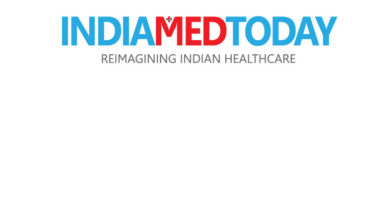Buy Indian Policy for Medical Devices – Lacks Boldness, Lost Opportunity

Mr Rajiv Nath, Forum Coordinator, (AIMED) Association of Indian Medical Device Industry has expressed deep concern over the Guidelines for implementing the provisions of Public Procurement (Preference to Make in India) Order (PPO) issued by DoP.
“Government of India has the intent but lacks boldness – half hearted attempts will get half hearted results. It is a clear case of a lost opportunity to promote indigenous manufacturing of medical devices to boost ‘Make in India’ initiative,” said Mr. Rajiv Nath
If lowest price of tender bid is imported – Indian Manufacturers (who meets criteria of Domestic Content) has option to match lowest price and seek 50% of tender. If lowest is Indian, no added advantage of course.
DiPP/ DoP need to do a study of gains made (if any) by any MSME in winning Tenders in past by matching L1 Pricing of imported Chinese products to win 20% of Tender under the MSME Policy . If an Indian manufacturer finds it unsustainable to match L1 of lower priced Chinese Imports to get 20% of the business as was earlier too possible then what is the use of this Policy to get 50% of the tender ?
We can match prices of any country other than China as it has no global market economies but a subsidized state sponsored eco system. How can we compete with low priced imports from china with non- remunerative, non- sustainable pricing unless Indian Govt. has supportive Policies, Mr. Nath asked insisting India needs to follow the UN system of procurement based on sustainable costs and not based on L1 Lowest pricing that motivates some manufacturers to cut corners in regard to quality and service delivery of product and give poor image to Brand India.
Regretfully to compete with low priced Chinese imports that are flooding the market, there is No Preferential Pricing for Indian Devices – World Bank provides for this. GoI is strangely shy – though GFR ( General Financial Rules) of Ministry of Finance permits.
The guidelines issued by DoP in its present form does not provide Preferential Pricing for Indian Devices, no incentives on maintaining and improving Quality, indigenous development and no redressal / no penal action based disallowance to use exclusionary 3rd Country Regulatory Approvals like USFDA approval in Tenders.
It doesn’t provide preference for ICMED certification by Quality Council of India to promote quality and no stated preference for India Design Mark to promote indigenous product development.
The following suggestions made by us to give encouragement & boost Manufacturers producing in India over imports have not been considered e.g.,
- Preferential Pricing for Domestic Manufacturers based on World Bank norms.
- Preference for ICMED / ISO Certified Manufacturers to boost quality.
- Preference for Design India Certified Manufacturers to boost indigenous development.
- Timely payment against Govt. Supplies.
- Penal provision against Hospitals that keep exclusionary compliance Clause of USFDA Certification as 3rd Country Regulatory approval.
What’s meant by Preferential Pricing? How does World Bank support Indigenous manufacturers in a developing country?
World Bank has a clause to support domestic manufacturers by adding 15% to import CIF price of imported goods for the sake of bid comparison and thereafter the lowest price is winner. So if Indian manufacturer wins he will supply at his bid price, not at a higher price
By denying preferential pricing to genuine Indian manufacturers, the policy guidelines can be said to be bordering on encouraging ‘Pseudo manufacturing’, he felt. It is sad that genuine concerns and suggestions of Domestic Medical Device Manufacturers are being repeatedly sidelined.
Background Note : India is import dependent on Medical Devices at over 70 -90% for its needs and has an import bill of over 27,500 Cr Rs. Indian manufacturers via their Association AiMeD have been highlighting the need for India to address this import dependency as they are many time unable to win public healthcare tenders and loose out to lower priced imports especially from China due to low tariff protection with import duty in most cases a maximum of 7.5% or they looseout to American competition for Tenders where Bid specifies USFDA approval as a mandatory qualification required.
The MOH&FW in its recently stated Health Policy states in clause 13.11 “ towards furthering Make in India , the private domestic manufacturing firms /industry could be engaged to provide customized indigenous medical devices in the health sector and in creation of forward and backward linkages for medical devices production. The policy also seeks assured purchase by Government health facilities from domestic manufacturers, subject to quality standards being met.” Similarly clause 13.13 talks about incentivizing Private Sector in proposed strategic purchase by Government .Clause 18 advocates the need to incentivize local manufacturing considering the over 70% import dependency.
Many Countries have a Policy to encourage Domestic Manufacturing. Even USA has a Buy American Policy to 1stconsider allocating supply to US Companies to US Public Healthcare and Overseas USAID procurement. Indian Exporters to the US are challenged with inability to sell to US Defense Forces while appointing Distributors. (In fact their new President has threatened some major Automotive Manufacturers to either manufacture in USA or pay hefty fees, just to encourage Domestic Production). Similarly, to support the ‘Make in India’ Policy the Public Procurement Order 2017 has been issued by DIPP on 15 June 2017 whereby Purchase Preference shall be given to Local Suppliers in all Procurement undertaken by Govt. procuring entities for domestically manufactured good with minimal local content of 50% and the Nodal Ministry may prescribe a higher or local percentage and the manner of calculating it
The Dept. of Pharmaceuticals on Friday, 18th May 2018 posted Guidelines for implementation of Public Procurement Order in respect of Medical Device Sector. Under the New Guidelines the 50% Domestic Content has been revised to read :
| Category of Medical Devices | % of Minimum Local Content
|
% of Local Content proposed to be increased in phased manner over next three years
|
| Medical disposables and consumables | 50%
|
50% to 75% |
| Medical electronics, hospital equipment, surgical instruments | 25%
|
25% to 45% |
| Implants | 40%
|
40% to 60% |
| Diagnostic Reagents/IVDs | 25%
|
25% to 45% |
The critical amendment by Dept of Expenditure last year of its GFR 2017 clause 153 paves the way for Reserved Items and other Purchase/Price Preference Policy sub clause (iii) states that the Central Government may, by notification, provide for mandatory procurement of any goods or services from any category of bidders, or provide for preference to bidders on the grounds of promotion of locally manufactured goods.”

